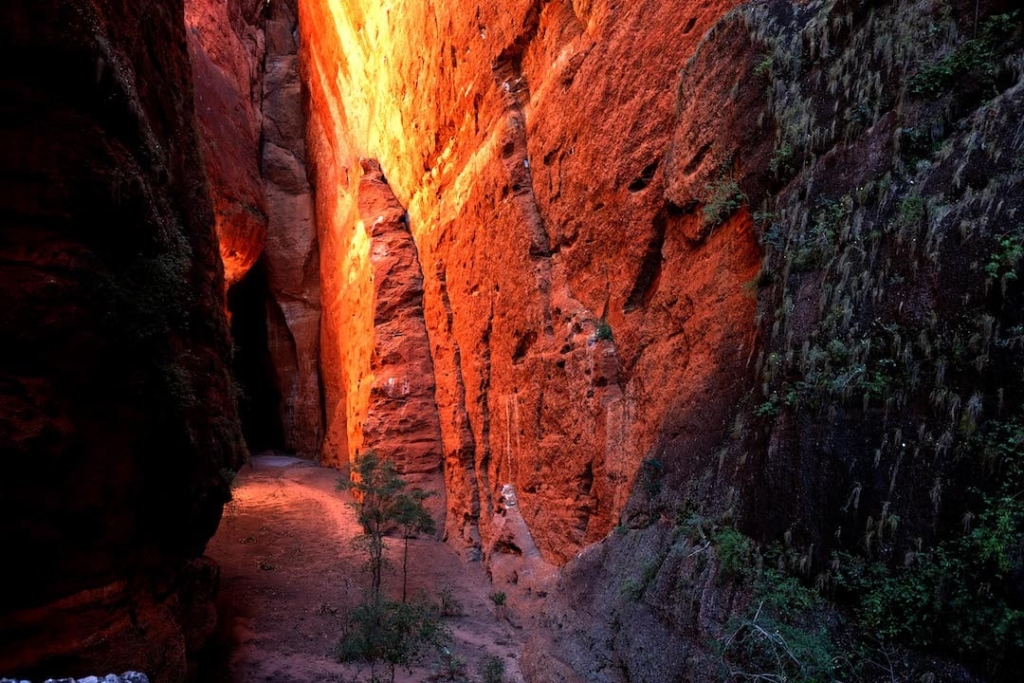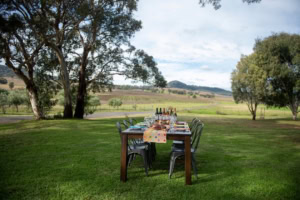The first time we wrote a book about 4WD in WA, we had to narrow all the tracks down to a top 50. Western Australia is the second biggest state in the world so there is lots of remote land and many dirt tracks out there to explore.
We’ve managed to cull the list down to five, each with its own challenges and rewards. These are some of the toughest yet enjoyable 4WD tracks in WA that you need to have a crack at.

Gibb River Road
The Kimberley is one of the last great wilderness areas: a region almost twice the size of Victoria with 0.1% of the population.
There are two roads from one end of the remote Kimberley to the other. The main one is the sealed highway number 1, Great Northern Highway. The other is the largely unsealed Gibb River Road. The 660 km former cattle droving route roughly runs from Kununurra to Derby. The road itself varies from dirt, washouts and bone shattering corrugations. There are also water crossings, with depths depending on how far into the dry season (May to November) you are travelling. Along its length are plenty of waterlily lagoons and waterholes to cool off and rinse off the dust. Many of these waterholes are fed by gushing waterfalls that sooth-tired hiking muscles. Our favourites are Manning Creek, Manning Gorge and Bells Gorge and the more remote Dimond and Sir John Gorge on Mornington Station. Campers at Charnley and Mornington Stations are woken up by a beautiful dawn chorus of birdsong.

Tips for driving the Gibb River Road in WA
- Take two spare tyres (we did two tyres in 100 metres)
- Explore some of the side roads. That is where the real magic lies. Each station features stunning landscapes such as deep gorges, dominating mountain ranges and abundant wildlife.
- Watch out for dangerous saltwater crocodiles, obey the warning signs.

Purnululu National Park (Bungle Bungles)
Purnululu is famous for its fragile beehive formations. They are found at the southern end of the Bungle Range. These “beehives” surround the massive Cathedral and Piccaninny Creek gorges.
At the Northern end of the range are the sheer red rock walls of Echidna Chasm and Mini Palms Gorge. It takes 2-3 hours to drive 50kms from the Great Northern Highway to camping areas in Purnululu National Park. The slow drive in is well worth it as the area is World Heritage Listed for its natural and cultural significance.

Tips for tackling the Purnululu 4WD track in WA
- Allow at least two nights to cover both totally different areas.
- Avoid driving in around sunrise and out around sunset. The dust and sun become blinding along the hilly and winding track.
- Visit Echidna Gorge around midday to get that glowing red affect.

Shark Bay
For most visitors to this World Heritage site, it’s the famous dolphins of Monkey Mia they come to see. But, to really get to experience Shark Bay in all its glory, jump into a 4WD and explore. Shark Bay’s pristine waters are protected by two peninsulas jutting out into the Indian Ocean. Steep Point is on many bucket lists because it is the western most point in mainland Australia. Steep Point is an extreme fishing spot for experience balloon anglers. Shelter Bay, in contrast, is a peaceful bay with perfectly white beaches with great camping areas.
The other peninsula is protected by Francois Peron National Park. This is where the iconic red sand dunes turn white as they meet the aqua water. Standing on the cliffs watching the sea life including dugongs is simply sublime.

Tips for 4WDriving in Shark Bay, WA
- Lower your tyres especially for the run into Francois Peron. That red sand is soft in many places.
- Do not drive on the salt pan birridas. It will be a very expensive exercise getting your rig out of there.
- It looks like a small area on the map but takes some time to get to each peninsula. Watch your fuel.

Warren River
The Warren River is in the South West flowing near the attractive forest town of Pemberton. The area has so many great contrasts. The magnificent towering Karri Forest lines the Warren River and has a few climbable trees, if you dare.
Make sure you include a stop at Yeagerup Dunes where the series of steep white sand dunes provide a true 4WD playground. While Callcup Hill is an extreme dune climb with a dog leg right in the middle. It’s a big challenge for the most skilful 4WDrivers.
Warren Beach is another beauty with a windswept coastline exposed to huge Southern Ocean swells where the Warren River meets the sea. If water levels allow you can cross the Warren River mouth.

Tips for tackling the Warren River 4WD track in WA
- Tyres down for the sand dunes, beach and especially Callcup Hill.
- Check with the Visitor Centre in Pemberton to whether Warren River mouth is open or closed.
- There are some tranquil campsites along the marron and trout filled river in Warren National Park.

West Cape Howe
Halfway between Denmark and Albany on the South Coast, this triangular shaped peninsular is the southernmost place in Western Australia. The 75-metre black igneous dolerite cliffs at West Cape Howe plunge into the seething sea. On a rough day, the waves create lots of spray.
On the way there are other scenic spots: Golden Gate beach, Dunsky Beach and Torbay Head, all requiring high clearance 4WD’s. If you are there in spring, wildflowers turn the low health into a blasé of colour.

Tips for 4WDriving in West Cape Howe, WA
- Drop your tyre pressures down
- There is rubber matting on parts of the 4WD track. Some , to smooth repair. It is slippery when wet.
- Care at West Cape Howe is obvious but take the warnings seriously. It’s a long way down.
Looking for more off-road adventures? Check out these 4wd tracks in NSW, Victoria and Tasmania.
Travel to WA
Rex flies to WA. Book your flights here and check out the route map below for more inspo.











